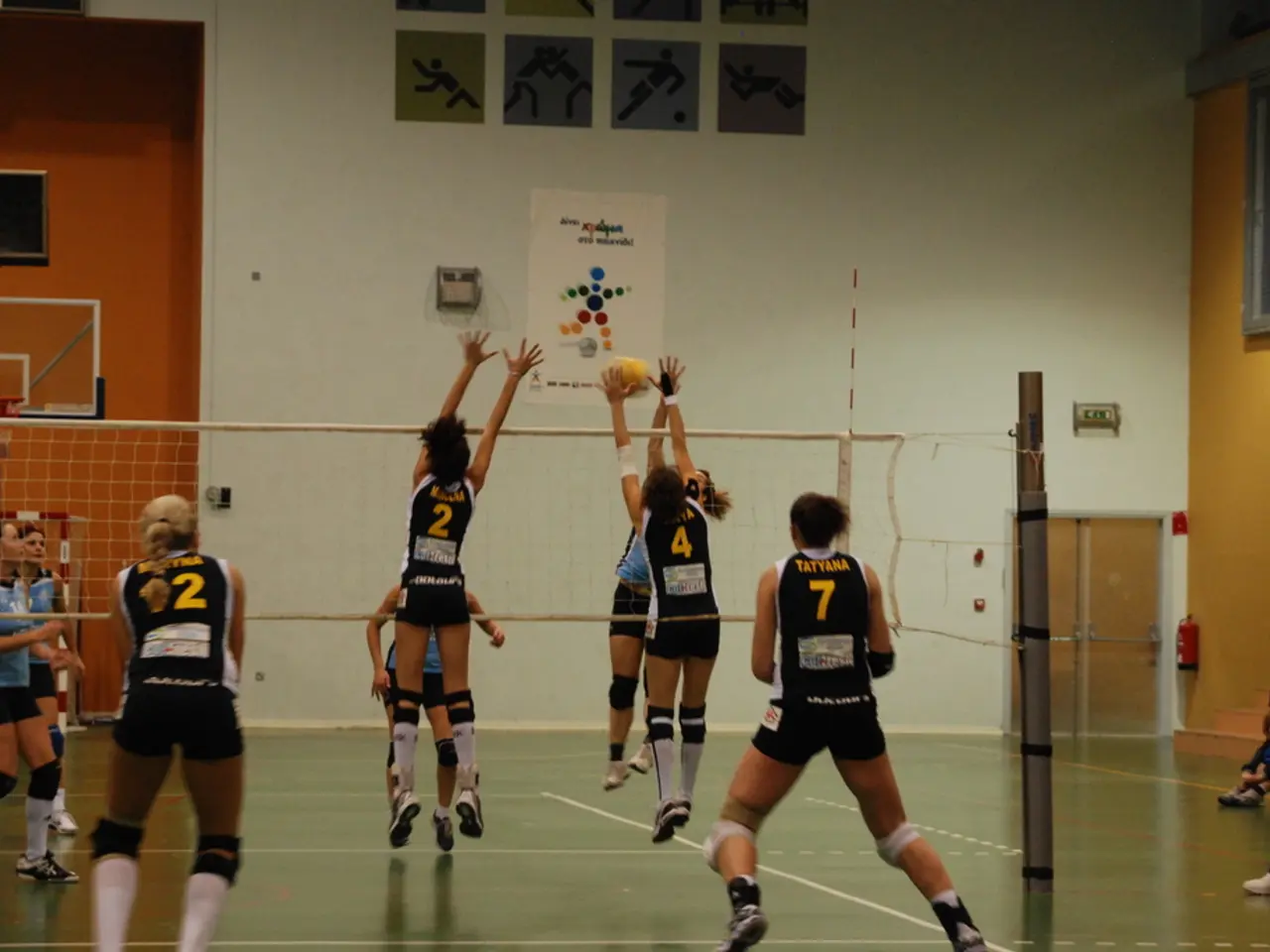Strategies for Building an Outdoor Pickleball Court
Outdoor pickleball courts are a great addition to any recreational space, offering fun and exercise for players of all ages. Here's a guide to help you construct the perfect pickleball court, taking into account essential factors such as surface materials, lighting, and safety features.
Planning and Dimensions
Constructing an outdoor pickleball court is an exciting endeavor that requires careful planning and attention to detail. Familiarize yourself with the standard dimensions of a pickleball court, including length, width, and net height. The standard dimensions for a pickleball court are 20 feet wide by 44 feet long for singles play and 34 feet wide by 44 feet long for doubles play. Compliance with official regulations and providing players with a consistent playing experience is important.
Surface Material
The best surface material for an outdoor pickleball court depends on factors such as budget, climate, and player preferences. Popular surface options and considerations include:
- Acrylic sports flooring: Durable, weather-resistant, and offers excellent ball bounce and traction. Low maintenance and visually attractive with vibrant colors. Hard surface, which may increase joint strain over time. Requires professional installation and periodic resurfacing every 5–10 years. Suitable for long-term, competitive outdoor courts. Costs average around $15 per sq. ft. and depends on skilled labor availability.
- Modular interlocking tiles: Cushioned, providing shock absorption and player comfort. Faster installation and easier to repair by replacing tiles. Higher upfront cost (around $18 per sq. ft.) but lower maintenance overall. Good for multi-sport use and customizable court layouts.
- Concrete or asphalt: Most economical (around $10–12 per sq. ft.) and very durable. Concrete is hard and may crack over time; asphalt is cheaper but less durable. Require painting/coating for finished appearance and court markings. Harder surfaces can increase injury risk and offer less traction consistency.
- Synthetic turf (e.g., Dynamic Turf): Soft, forgiving surface that reduces joint strain and supports shock absorption. Excellent drainage and UV stability, suitable for all seasons. Offers consistent ball bounce and strong player traction. Higher cost (about $20 per sq. ft.) and suitable for players prioritizing injury prevention and comfort.
- Vinyl flooring: Affordable, easy to install, and suitable for casual or multi-use recreational spaces. Offers cushioning with foam/gel backing to reduce joint impact. Look for high slip resistance and durability features such as tear resistance and reinforced top layers. Easier to maintain, but generally less durable long-term in outdoor settings than acrylic or turf.
Climate Considerations
In sunny, UV-intense climates, choose UV-stable and fade-resistant materials like acrylic with protective coatings or UV-stable synthetic turf. Areas with heavy rain benefit from surfaces with good drainage (e.g., synthetic turf with drainage holes). For cold climates with freeze-thaw cycles, flexible surfaces like modular tiles or turf may be less prone to cracking than rigid concrete.
Player Preferences
Competitive players may prefer firm, smooth surfaces like acrylic for consistent ball response. Recreational or older players might prioritize cushioned surfaces such as modular tiles or turf to reduce joint stress. Casual or backyard courts can consider cost-effective options such as stamped concrete with acrylic coating or vinyl for multi-use.
Lighting and Safety Features
Adequate lighting is essential for evening gameplay. Incorporate lighting solutions such as overhead fixtures or LED bulbs to extend playing hours and ensure uniform illumination. Install sturdy fencing and enclosures around your pickleball court to enhance safety, minimize stray balls, and define boundaries. Consider options such as chain-link, mesh, or transparent acrylic panels for optimal visibility and durability. Integrate accessibility features such as wheelchair ramps, designated parking spaces, and ADA-compliant pathways to ensure equitable access for players of all abilities.
Amenities
Include seating areas, shade structures, and amenities such as water fountains or equipment storage to enhance player comfort and enjoyment. The ideal location for a pickleball court should be chosen based on factors such as available space, proximity to amenities, and potential environmental impact.
In summary, balance your budget with desired durability and player comfort. Acrylic is an excellent all-around outdoor court surface for durability and performance if the budget allows. For softer, joint-friendly surfaces, modular tiles or turf are preferable. Concrete or asphalt suits very tight budgets but may require more upkeep and offer a harder playing experience. Climate factors like sun, rain, and temperature extremes should guide choice towards UV-stable and well-draining materials. Player preferences for comfort vs. competitive play also influence the optimal surface.
[1] Pickleball Court Surfaces and Costs
[2] Outdoor Pickleball Court Surfaces
[3] Pickleball Court Construction: Turf vs. Acrylic vs. Concrete
[4] Vinyl Flooring for Pickleball Courts
- An outdoor pickleball court can create a wonderful blend of home-and-garden and outdoor-living spaces by providing an area for exercise and recreation right in one's backyard.
- In addition to offering a robust playing surface, careful consideration of amenities such as seating areas, shade structures, and storage can greatly enhance the overall lifestyle experience for pickleball enthusiasts playing on their home court.




